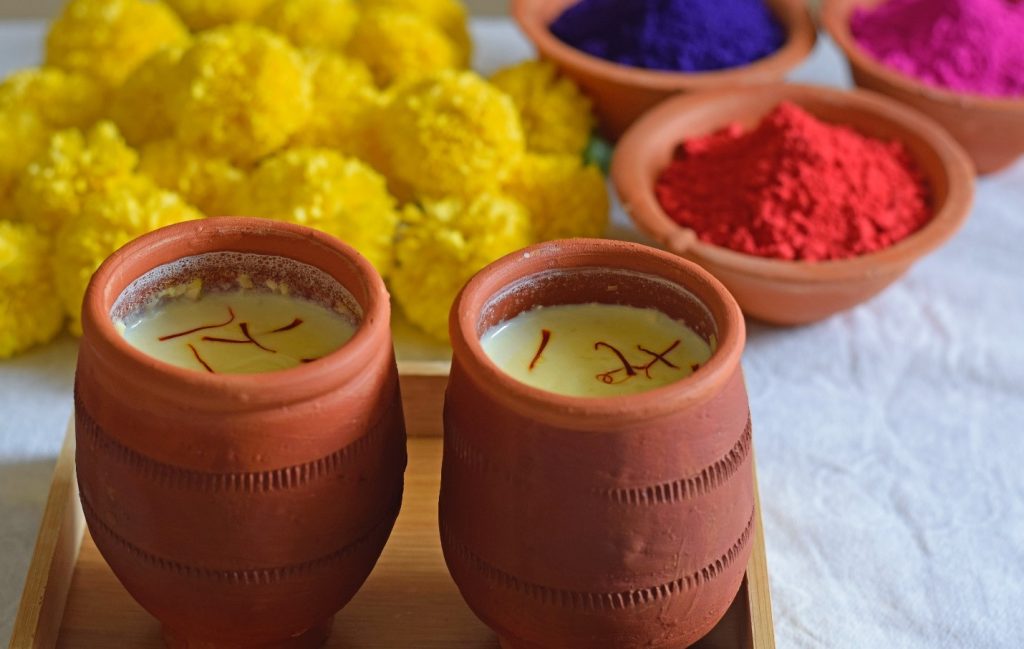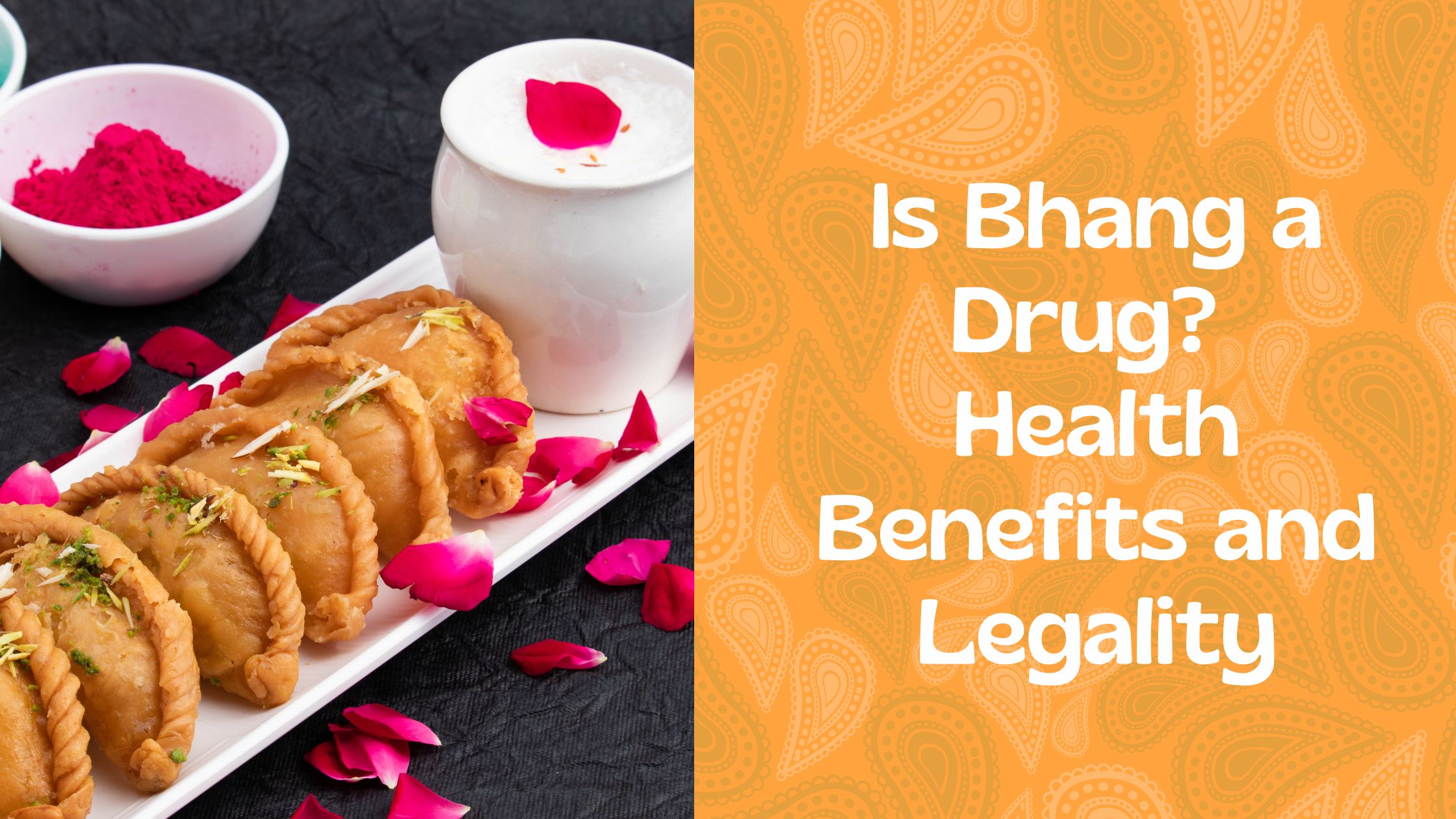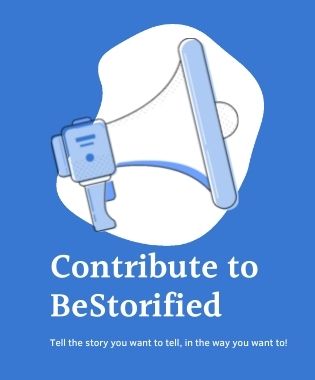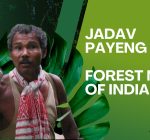Is Bhang a Drug? Health Benefits and Legality
- March 30, 2023
- Health
This is a contribution post by Satabdi Mukherjee
The Delhi Police’s tongue-in-cheek response to Zomato’s tweet to a customer asking if they deliver bhang ki goli is the latest in a series of hilarious incidents that occur every year during Holi.
What is it about bhang, which has cultural and spiritual significance in India, that brings up such frothy emotions? How is an addictive substance so freely consumed?

Bhang is an edible green paste made from the leaves and seeds of the female cannabis plant. The addictive substance in bhang is tetrahydrocannabinol (THC). The Atharva Veda lists cannabis as one of five sacred plants. The resin of the plant is used to prepare a concentrate called charas or hashish, whereas the flower is crushed, rolled, and smoked as ganja (weed).
Use of bhang in Ayurveda
The use of bhang is documented as far back as the Vedic period (1500 BC – 600 BC) and is consumed during Holi and Mahashivaratri. It is served as thandai, pakodas, pedas, or halwas. The underlying logic is that it has a carminative effect that helps digest the different sweets and delicacies prepared for the festivities. And you thought it was just a recreational substance?
Interestingly, Ayurvedic texts describe the use of cannabis as a primary ingredient in around 190 compositions and 15 prescription forms. It is useful in dealing with conditions like sleeplessness, hypertension, diabetes, depression, seizures. It is also used for pain management, especially for arthritis, muscle recovery, boosting lung health, and weight management.
How does bhang make you “high?”

When bhang is heated, its hallucinogenic effect is amplified. So, when the ground leaves are cooked, the inactive molecule in them—tetrahydrocannabinolic acid (THCA)—is converted into the psychoactive THC by a process called decarboxylation. That’s why bhang pakoras provide a greater “hit” than uncooked preparations like thandai. You’re likely to start feeling “high” within 30 minutes to 2 hours. The effects tend to peak within 4 hours and can last up to 12 hours or more.
On the other hand, when bhang is inhaled as a joint or a weed pen, the THC in the vapours reach the lungs directly, which moves to the bloodstream and enters the brain. So, you start feeling the effects almost immediately. It peaks within 30 minutes and could stay for up to 6 hours.
Is bhang legal in India?
The legality of bhang in India is a grey area. Known in Hindu mythology as the drink given to Lord Shiva to relieve his pain when he consumed the “halahala” poison during the churning of the ocean, bhang is entrenched in Indian culture.
The Narcotic Drugs and Psychotropic Substances (NDPS) Act of 1985 prohibits the manufacture and sale of the resin and flowers of cannabis, but permits the use of its leaves and flowers. It is legal to cultivate cannabis for industrial purposes like producing industrial hemp and horticulture, but not for recreational purposes.
Interestingly, it’s permissible to harvest the leaves of naturally-growing cannabis plants. Places like Pushkar and Jaisalmer also have government-approved bhang shops, whereas those in Varanasi remain in business throughout the year. Uttar Pradesh even licences and taxes bhang sales like liquor.
Pro-cannabis advocates point out that bhang has less than 0.3% THC, which makes it non-habit-forming and non-toxic. Thus, it should not be clubbed together with “hard drugs” like heroin or cocaine.
In the late 19th century, the British commissioned a report on the effects of bhang and its cultural significance. They were surprised by its widespread consumption and noted, “To forbid or even seriously restrict the use of so holy and gracious an herb as the hemp would cause widespread suffering and annoyance. It would rob people of solace in discomfort, of a cure in sickness, of a guardian whose gracious protection saves them from attacks of evil influences.”
Satabdi is a content writer and editor who enjoys writing about health and wellness, marketing, and HR. She has worked with pharmaceutical, edtech, and SaaS companies in editorial roles. When she’s not neck-deep in research for her next piece, she enjoys reading historical mysteries or Regency-era romances.
Contact her on LinkedIn or check out her book reviews at Book Reviews by Satabdi.






